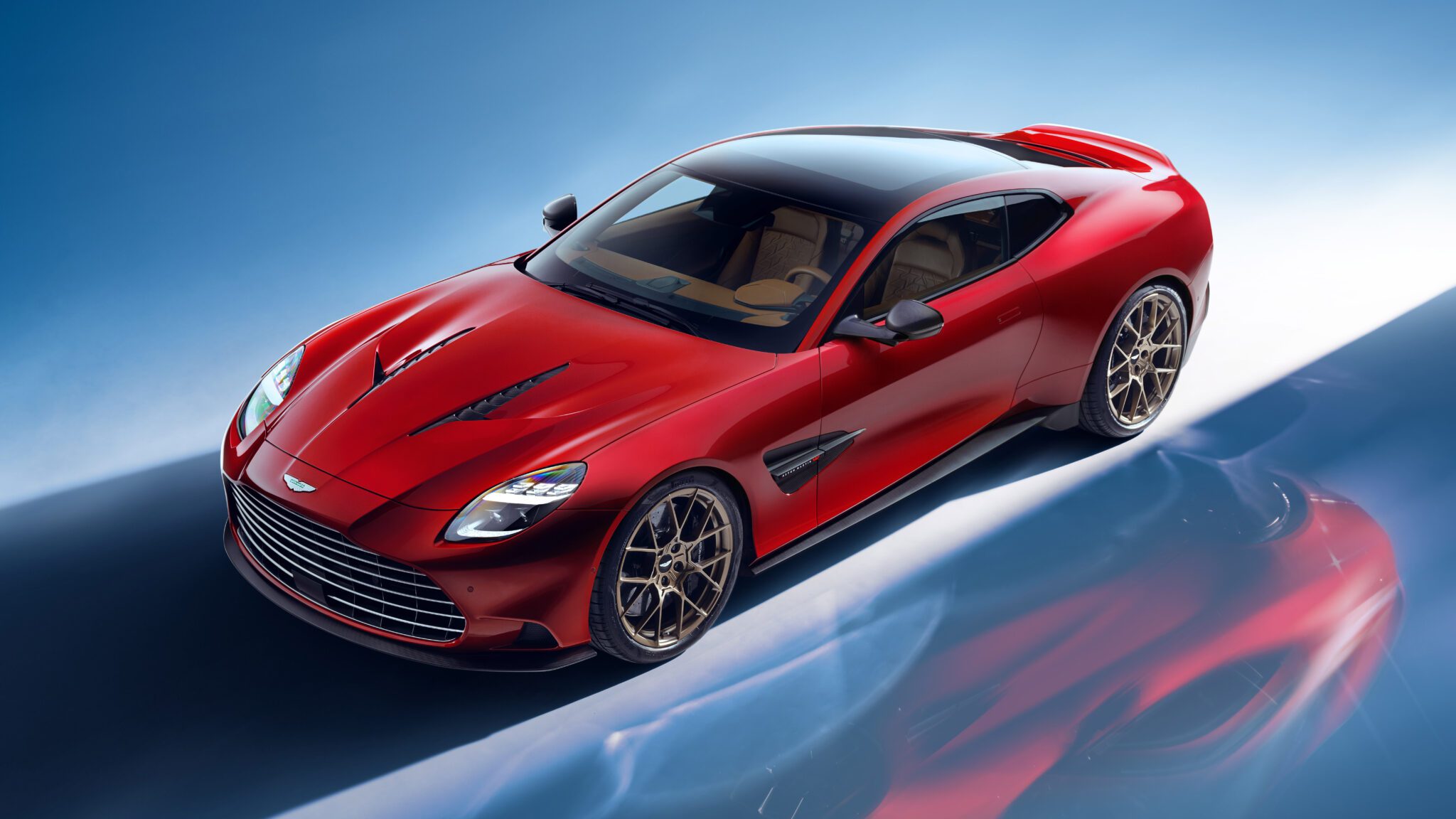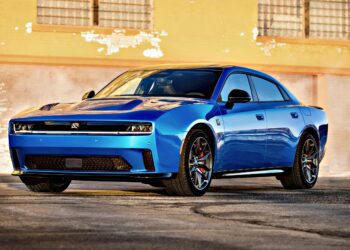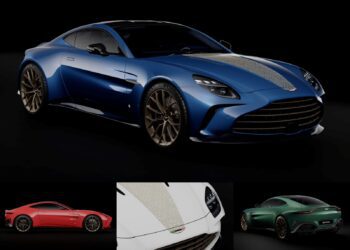For years, it was unclear what the next generation of the Aston Martin Vanquish would be or if it would ever return. The 2019 Geneva Motor Show saw the unveiling of the Vanquish Vision Concept, a mid-engined, Valkyrie-like supercar set to house a brand-new V6 engine. Flash past a global pandemic and a major shake-up of the company’s ownership, however, and we are left with something entirely different. The 2025 Aston Martin Vanquish debuts as a big, rear-wheel-drive grand tourer powered by a new V12. In order words, a proper Aston.
We flew to Q New York, the carmaker’s flagship US showroom, where customers can see the brand’s latest models and option cars with the help of a design team or, as in our case, get a sneak preview of an upcoming model ahead of its release.
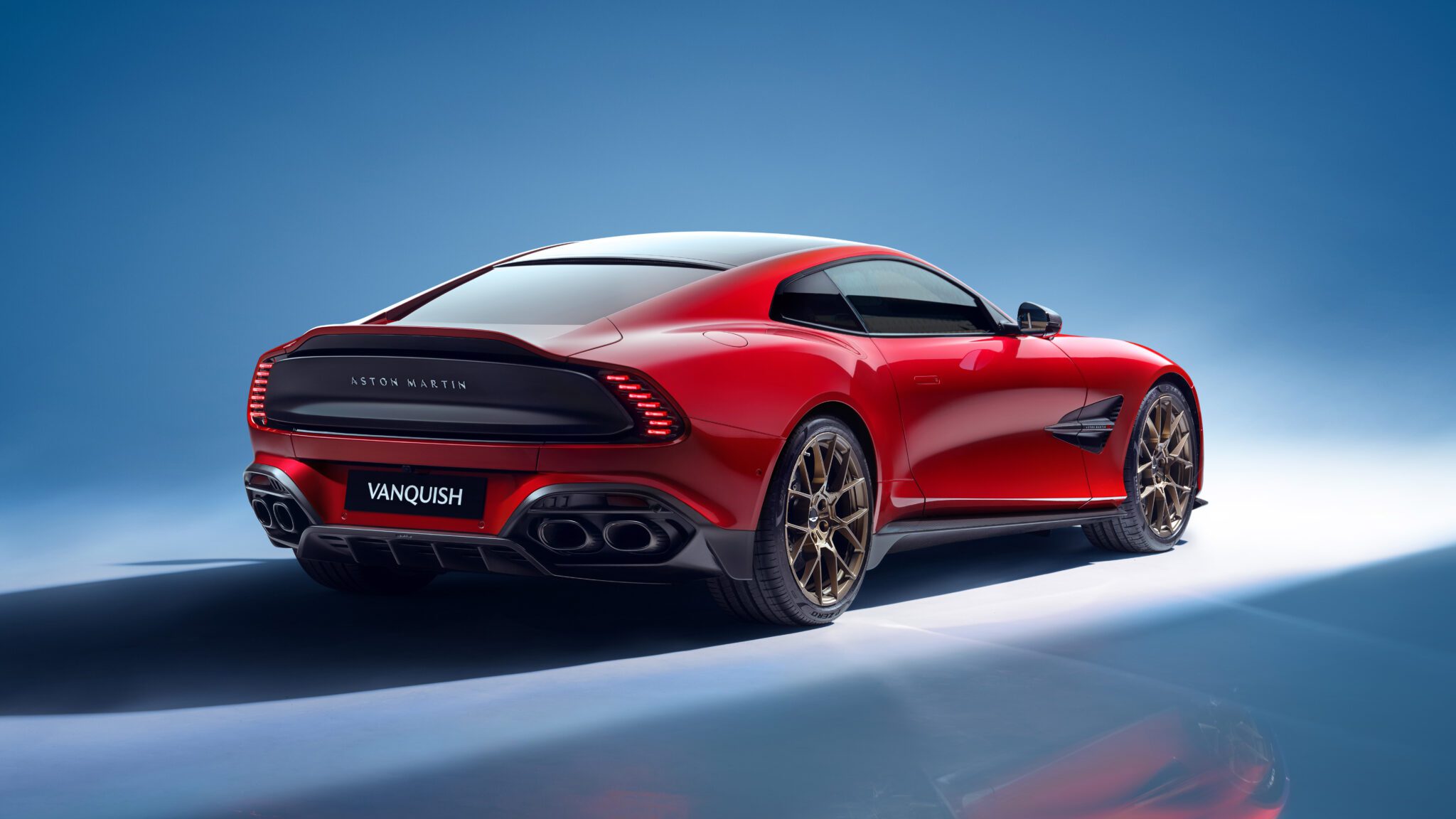
Aston Martin’s Senior Manager of Vehicle Engineering, James Owen, walked us through what undoubtedly dominates the conversation surrounding this car: its new 5.2-liter twin-turbocharged V12, which can trace its roots to the twelve-cylinder unit that powered the outgoing DBS. “If we look at the old engine, which was first introduced in DB11 and then ran out on DBS 770, to gain the extra power and torque, we’ve had to completely overhaul everything. So it really is a new engine. It’s completely unrecognizable from that engine.”
Owen further added: “So just to give you a few key changes, there’s a new block, new head, new cams, new intake, and new exhaust ports. Even down to the cylinder head bolting strategy is completely new. I could go on down the rest of the engine, but I think you get the picture. It’s all new. And that cylinder head bolting strategy was required because we’ve got a 15% uplift in pressure in the engine, and that’s fed by new fuel injectors, which can deliver a 10% higher flow rate of fuel and new turbochargers. The turbochargers also spin at 15% higher speed than the older DBS version.”
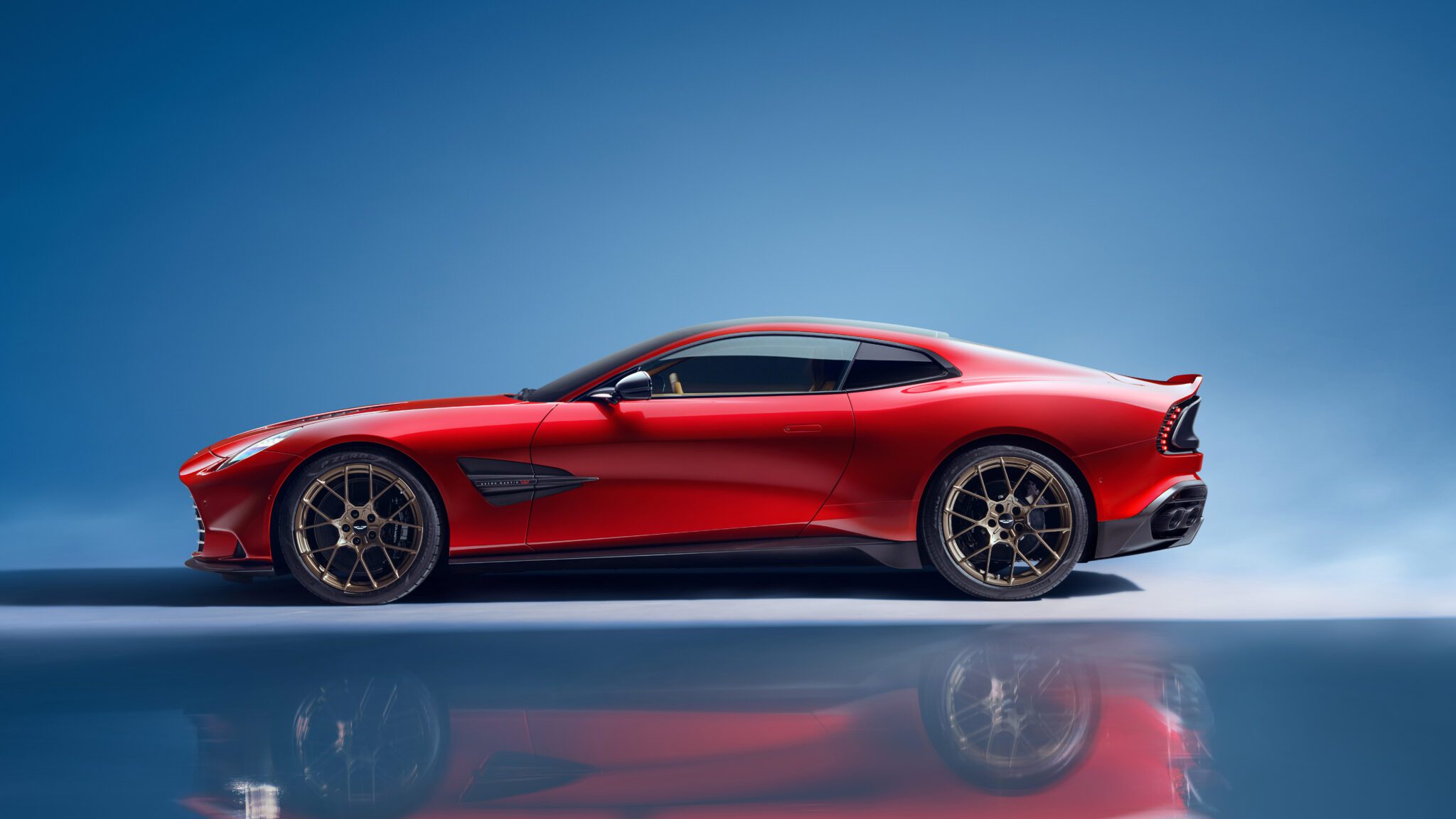
This extensive reworking results in a monstrous 824-horsepower and 738-pound-feet of torque output, achieved without any electrification. Beyond the power itself, the Aston Martin Vanquish incorporates a new Boost Reserve feature, which, according to Owen, “works by effectively over boosting the turbos, so demanding more from them, holding the pressure behind the throttle blade and then giving back when it’s demanded by the driver.” He added, “This isn’t just about creating a big number in terms of power and torque. It’s about giving the driver the experience, the feedback as well as that.”
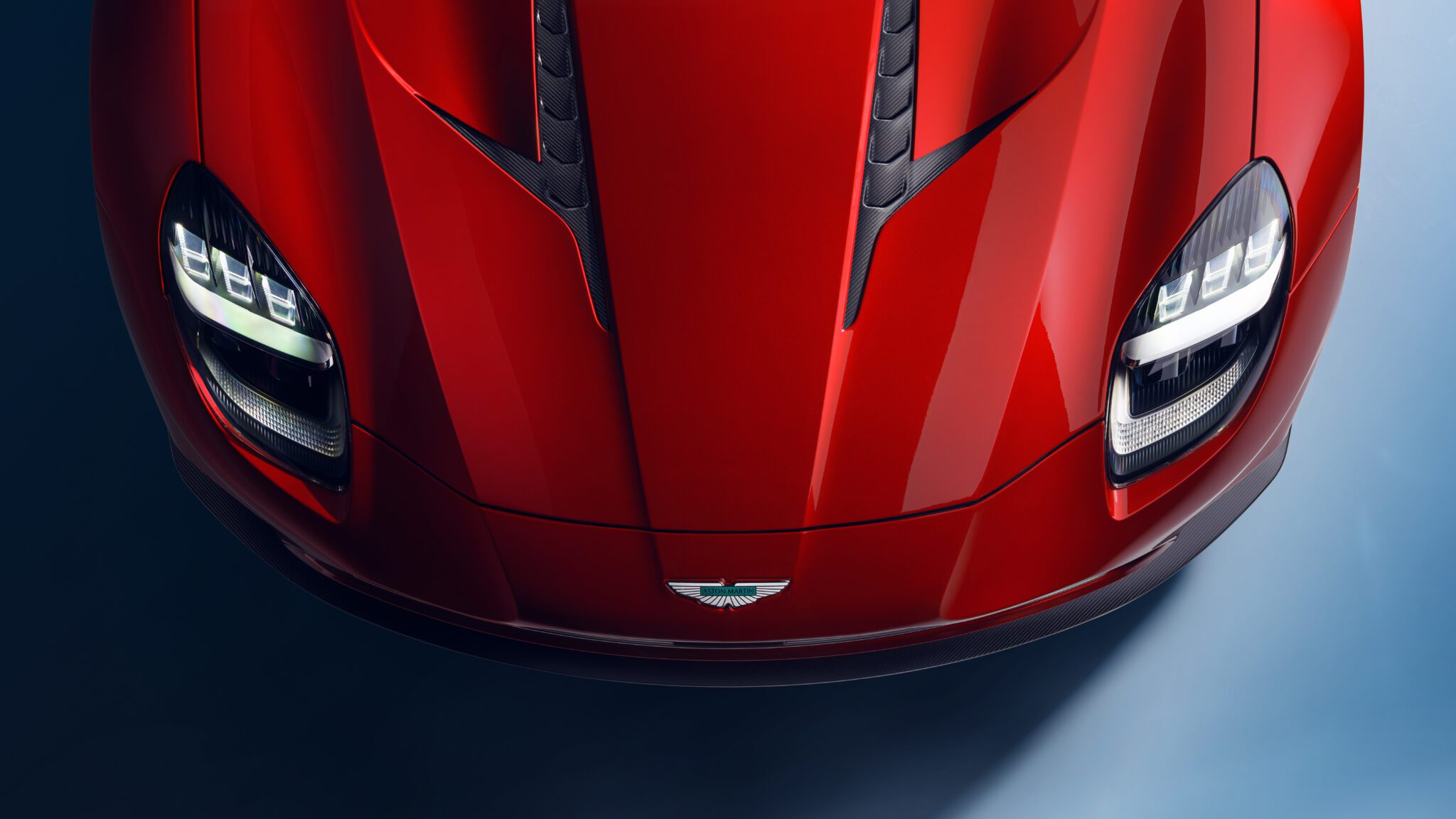
That massive output makes its way to the rear wheels via a ZF-sourced eight-speed automatic transmission, which, for the first time in a V12 Aston, now links up with an electronic locking rear differential. This replaces the mechanical unit used in the outgoing DBS, allowing for near-instant locking of the rear wheels, allowing the new Vanquish to rotate more quickly, while an updated traction control system helps dial in yaw angles while stabilizing the car at higher speeds. This pairs with Vanquish-specific Pirelli P Zero AML rubber, measuring 275/35/ZR21 upfront and 325/30/ZR21 in the rear.
The result is a car with a dry weight of 3,911 pounds that can sprint to 60 mph in 3.2 seconds while continuing to a 214 mph top speed. Beyond its stats, however, and as we’ve seen with the rest of the carmaker’s lineup, plenty of work went into ensuring that the Aston Martin Vanquish wouldn’t just be quick but genuinely fun to drive.
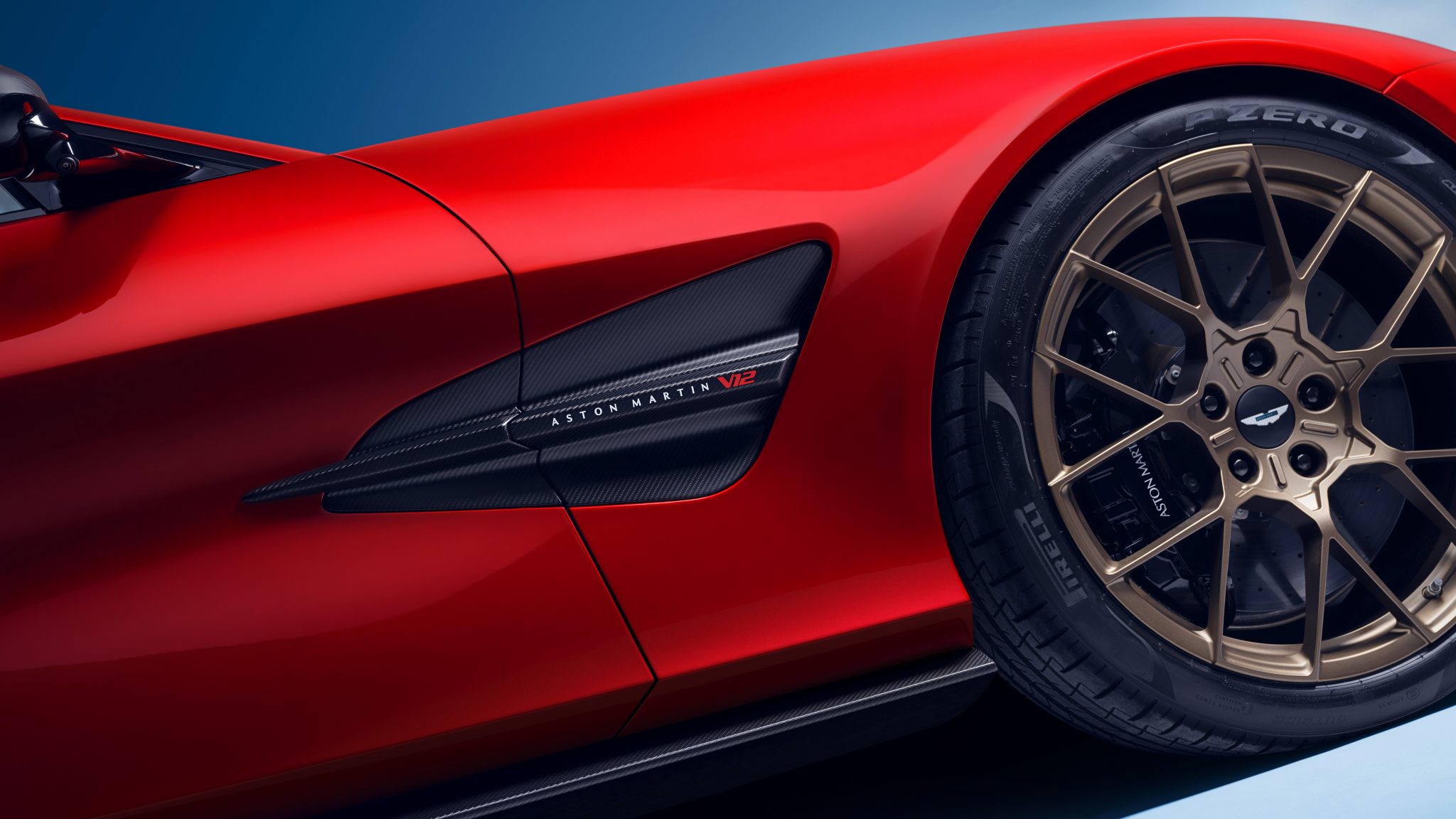
These efforts begin with the Vanquish’s new structure. Like its engine, its structure can trace its roots to the DBS that preceded it, incorporating a bonded aluminum body with double wishbones up front and a multi-link setup in the rear. However, it’s now longer by 3.2 inches, with the extra length gained between the front axle and its A-pillar. Thanks to new underbody stiffening and a firmer engine cross brace, its lateral stiffness increases by 75 percent over the DBS. This creates increased mounting stiffness for its adaptive Bilstein DTX Dampers, first seen in the DB12.
“We’ve utilized that same technology because it gives us such a breadth of tuning capability. Compared to DBS technologies, it’s around about 500 percent bigger bandwidth of capability in those dampers, and that allows us to really position the car exactly how we want, particularly through the different modes as well. GT, Sport, and Sport Plus,” says Owen, adding,” It has unique spring tuning as you would imagine, and its anti-roll bars and bushings are all unique to Vanquish.” Working in concert with these Vanquish-specific components is a set of standard carbon ceramic brakes with six and four-piston calipers. The discs measure 16.1 inches up front and 14.1 inches in the rear.
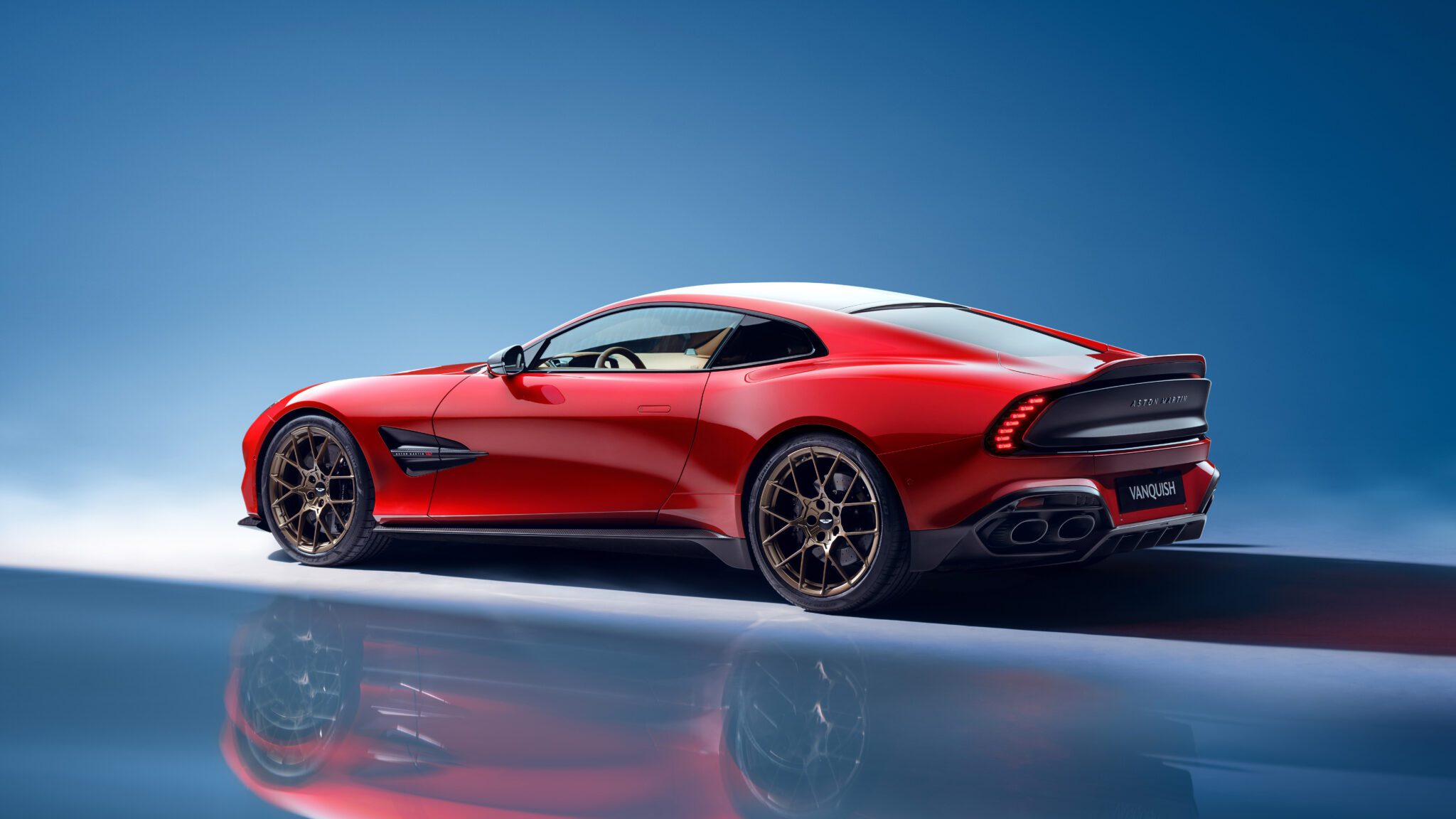
Stylistically, the Aston Martin Vanquish advances the new corporate face we’ve seen in the DB12 and Vantage. However, it does so to create a proper flagship product. As such, you won’t find carryover body parts with its panels now made of carbon composite materials to keep its weight down. There are functional improvements, too, including a 13 percent larger grille, which is necessary to channel enough air to keep the new V12 cool.
The Vanquish now incorporates a tinted panoramic glass roof, frameless door mirrors like those introduced for the updated DBX707, and retractable door handles, which are now present when the car is unlocked via the key fob. Its rear end is characterized by an upright trunk lid, which the carmaker calls the “Kamm Tail.” Its central contrasting element is known as the “Shield,” which the carmaker incorporated in such a way as to look like it’s floating within the bodywork. It also provides customization options, offering it in both carbon fiber and body color.
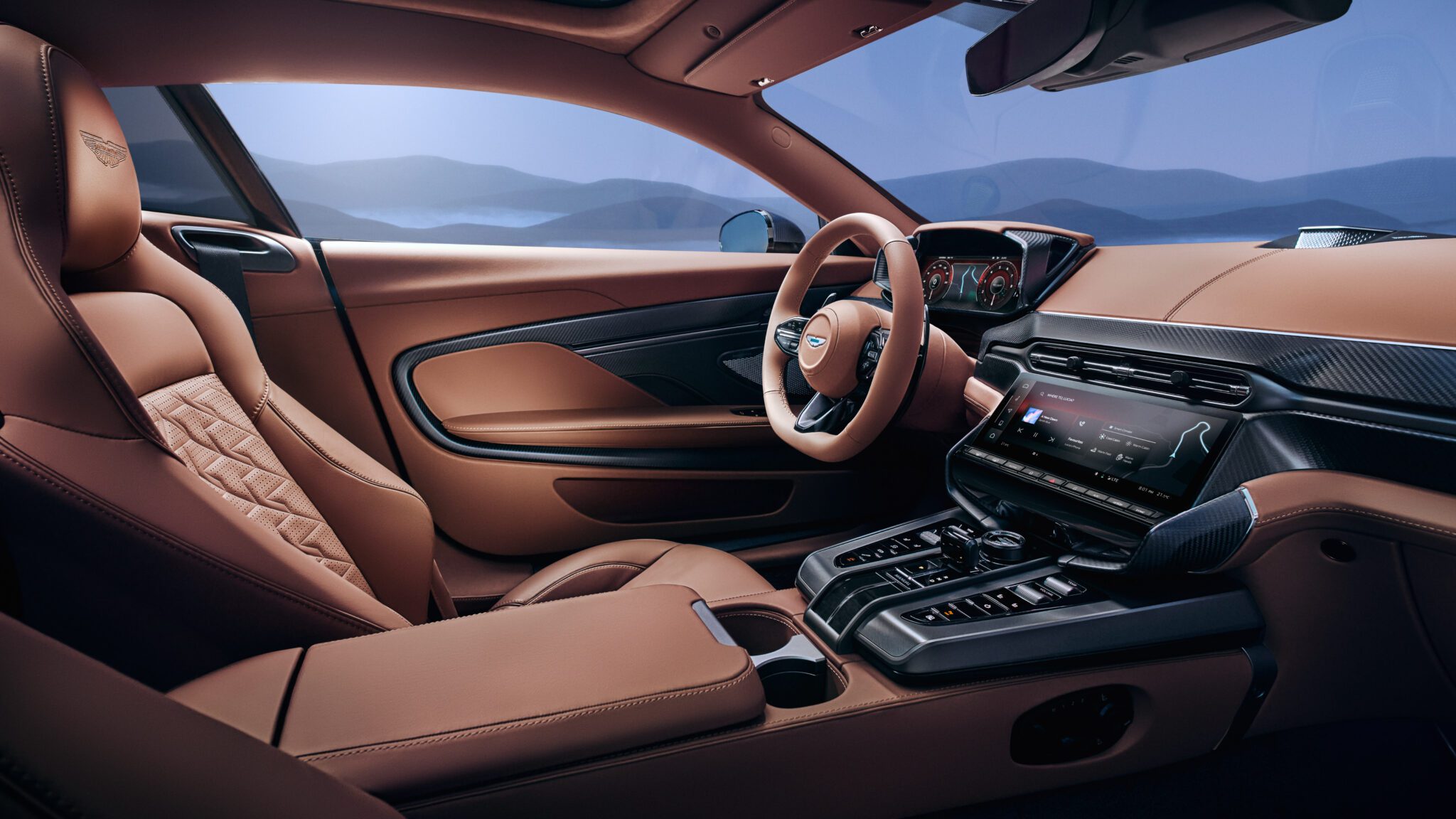
Inside, the Aston Martin Vanquish takes the material and technological improvements already applied to the DB12, Vantage, and DBX707 and pushes them to a flagship level. While its twin 10.25-inch screens are familiar, their housings and the dashboard’s layout are unique to this model. However, there’s an even greater focus on offering more customization flexibility, be it the car’s trim, leather, or even its fitted luggage, as the carmaker aims to serve the highest ends of the GT space with the Vanquish.
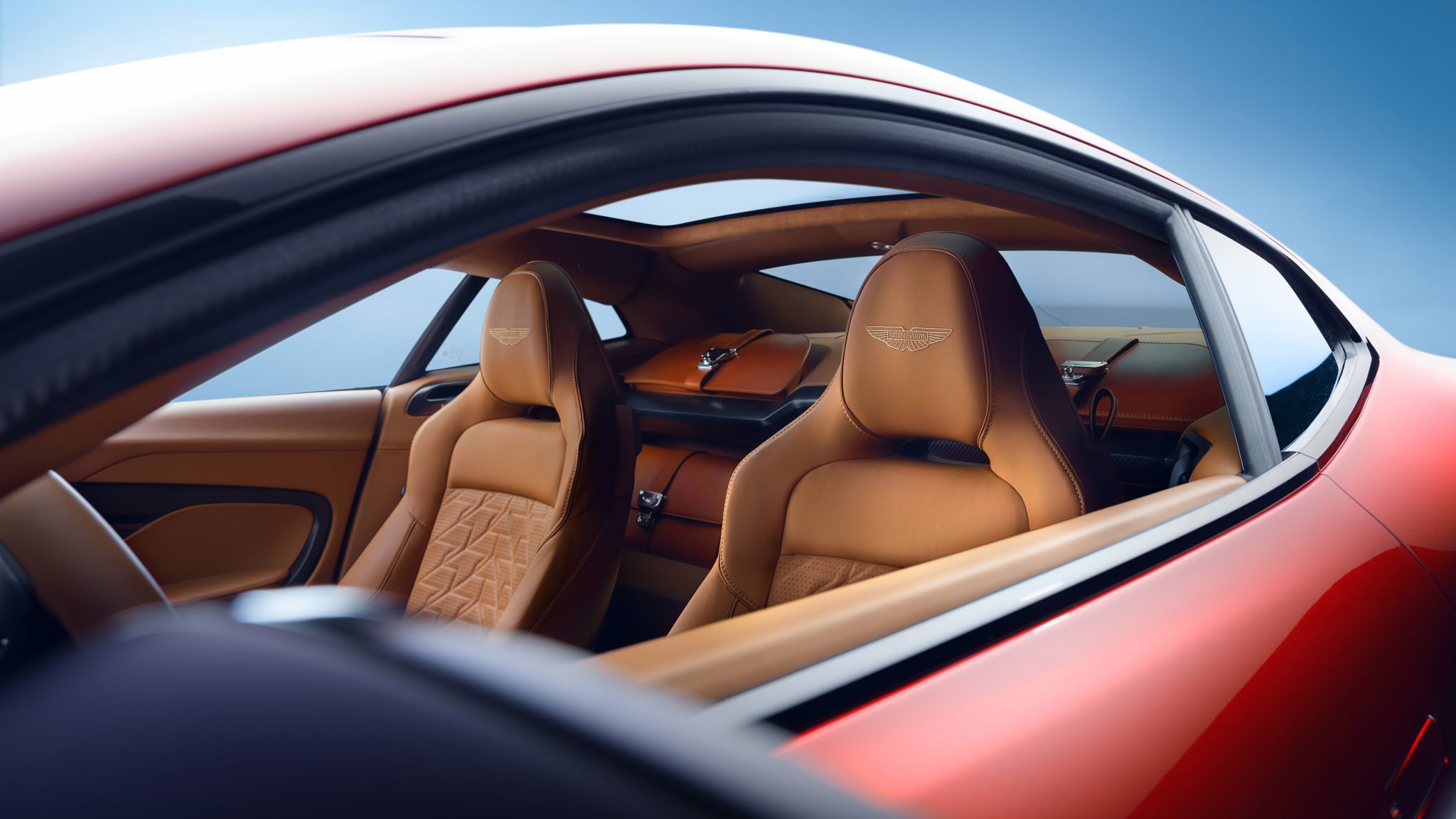
Although the Aston Martin Vanquish won’t technically be limited to a specific number of units. The carmaker aims to produce less than 1,000 of them yearly. The outgoing DBS carried a base price of $344,586, and although specific pricing for the US has yet to be announced, expect the new Vanquish’s base price to surpass the $400,000 mark. Deliveries are scheduled to begin in the fourth quarter of this year.
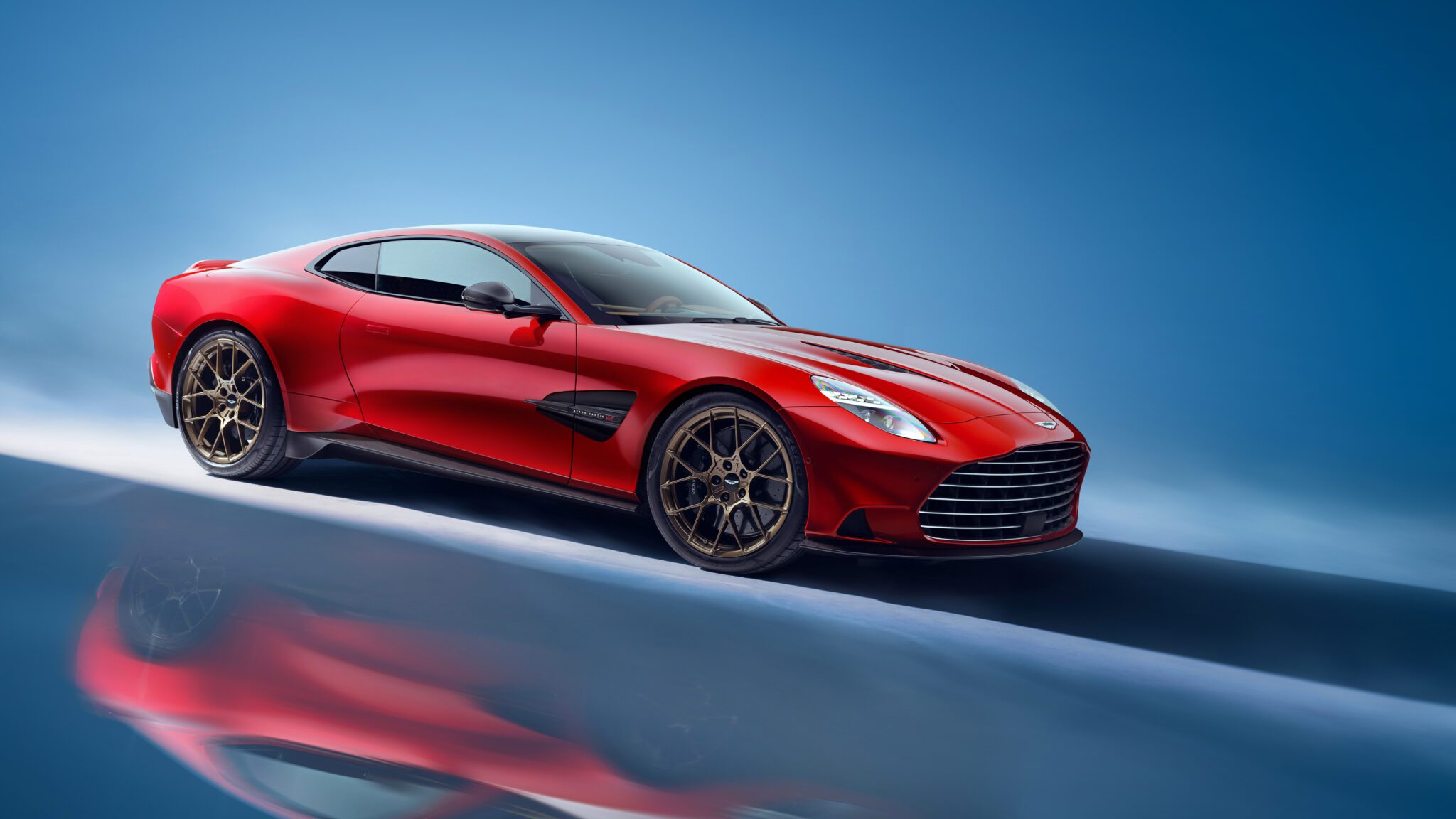
We’ll leave you with a quote from Owen that nicely summarises the brand’s intent for its newest model. “We don’t just expect these cars to be in a showroom. We expect them to be driven, and we expect them to be capable when they are driven.”

